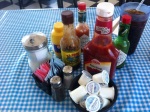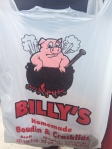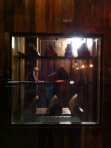Sit at a table in a French restaurant and, in the clumpiest of un-Gallic accents, order a wine which displeases the chef as an accompaniment to your main, and he will march into the dining room, sommelier in tow, to look you square in the eye and tell you that the restaurant will serve you no such wine with your meal. Or so we have learnt watching that country populated by terribly surly, or terribly charming, people (for there is no middle ground) that so often passes for France in Anglophone, and particularly American, films. I imagine this is a Libertarian’s idea of how far that busybody and interfering matron they call the nanny state can whoop us Europeans into submission: not only are we duped into believing in free universal healthcare and unemployment assistance; we also are happy to be told which wine to drink with our meals. Don’t hold it against me but, entre nous, I would love it if, appropriately subsidised to match my spending power, I was told what wine to drink with every meal I eat at a restaurant. It would save me that tiresome ritual of choosing the second less expensive wine and pretending that I care or know what I am doing when it comes to tasting it.
Not so Sally Albright in When Harry Met Sally, who as a patron of formidable exactitude in her restaurant orders, embodies the American ideal of demanding individuality in several scenes where all manner of ingredients are to be substituted, served on the side, or entirely eliminated, to please her taste buds and dietary requirements. To watch Meg Ryan’s concentrated frown under a panoply of outmoded hairstyles as she peruses a menu that she will shortly blitz until it is barely recognisable, is to witness a transformation that is as entertaining and charming as it is ground breaking. For here we have all the ingredients that traditionally made for the insufferable shrew of male-centred chauvinistic nightmares: the brittle demands and know-it-all self-sufficiency coupled with the frosty and forthright sheen of the waspish hyper-educated woman. This time, however, those same ingredients are expertly handled and turned into comedic gold by Norah Ephron, who not in vain was an excellent cook as well as a very sharp scriptwriter, and thus Sally Albright emerges to honour her surname in every sense of the word: verbally sparring the lackadaisical but zingtastic Harry Burns and managing to hang on to her thought through idiosyncrasies in every frame of the film. So that for the first time we have a romantic heroine who only changes the length of her feathered hair and width of her shoulder pads to signal the passing years for absentminded viewers but does not budge an inch to meet the demands of love or marriage.
Norah Ephron’s script is commendable to a quasi-Aristotelian point: it seems to generate its own perfect brand of romantic comedy, one where laughter and common sense are expertly matched, and where a feminist outlook is effortlessly paired with hetero-normative romance. In When Harry Met Sally, Ephron managed to prove that opposites attract to an extent that goes beyond the purely dramatic to enter the terrain of ideology. I imagine the world it depicts and the narrative it unfolds as a sort of Heaven for straight female overachievers: a place where professional acumen and steely resolve are a clear sine qua non for women but one where women and men make each other laugh and form friendships so valuable that the thought of losing them seems a more frightening prospect than the dreaded spinsterhood of yore. By showing us that a woman finds love when she meets a man who is happy to be her equal, Ephron and Reiner manage to give us one of the first feminist fairy tales on the silver screen. No fairy tale that delivers its moral through a woman faking an orgasm in a crowded Manhattan deli could be otherwise.
If we are lucky, we will also have what Sally is having.























